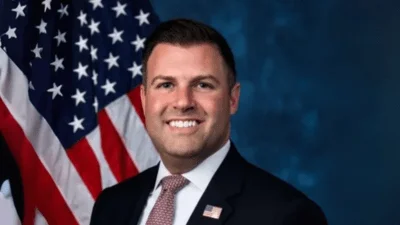WASHINGTON - Three years after the U.S. Environmental Protection Agency was given information by our nation's federal fish experts to protect endangered salmon from harmful pesticides, the agency has yet to take action to protect more than 20 species of salmon. Because of this inaction, today Reps. Edward J. Markey (D-Mass.), the top Democrat on the Natural Resources Committee, and Grace Napolitano (D-Calif.), Ranking Member of the Water and Power Subcommittee, and John Garamendi (D-Calif.) sent a letter to EPA Administrator Lisa Jackson asking her agency why it had yet to act on the recommendations.
"Salmon aren't pests and shouldn't be subjected to harmful pesticides," said Rep. Markey. "Enacting these protections for endangered salmon shouldn't be as hard as swimming upstream. We have the science, we know the danger, and we understand the economic benefit of protecting these fish. It's time for EPA to take action."
"The EPA, the agency charged with protecting the health of our land and water, must implement protections for endangered salmon populations," said Rep. Napolitano. "Allowing the release of pesticides into the water without taking measures to protect the salmon would hurt their recovery and not be good public policy. I look forward to hearing how EPA will implement these safeguards and ensure the proper stewardship of this critically important species."
"As stewards of fragile habitats that have sustained our nation's prosperity, we should do what we can to prevent the extinction of endangered species," said Congressman John Garamendi (D-CA). "I join Ranking Member Markey and my colleagues in asking the EPA for an update on our progress in protecting the salmon."
The letter can be found HERE.
Under the Endangered Species Act (ESA), the EPA is required to consult with the National Marine Fisheries Service (NMFS) whenever its actions could cause harm to an endangered species, including salmon populations along the West Coast. Accordingly, the EPA is required to consult with the NMFS when it issues use-restrictions on a pesticide's label, reducing dramatically the risks that continued use of the pesticide would have on salmon populations. In 2008, the NMFS recommended changes to the labels of three pesticides to provide full protection for these salmon. The EPA has yet to take action on the NMFS's recommendations.
Continued use of these pesticides could harm the recovery of endangered salmon populations. Restoring the salmon populations of Oregon and Washington could yield annual economic benefits of over $5 billion.
According to the U.S. Geological Survey, at any given time, more than 90 percent of U.S. municipal watersheds contain detectable amounts of at least two pesticides; and over 60 percent of the time contains detectable amounts of at least four pesticides. If pesticides continue to enter the water supply unchecked, it will increase water treatment costs and threaten our supply of safe drinking water. Furthermore, numerous cost-effective and less toxic alternatives to these pesticides exist and are already available on the market.
In the letter, Reps. Markey, Napolitano and Garamendi asked whether the EPA will initiate cancellation procedures for any of the pesticides that are harming West Coast salmon populations, and requested clear timelines on implementation of other recommendations from the NMFS on pesticide use.








